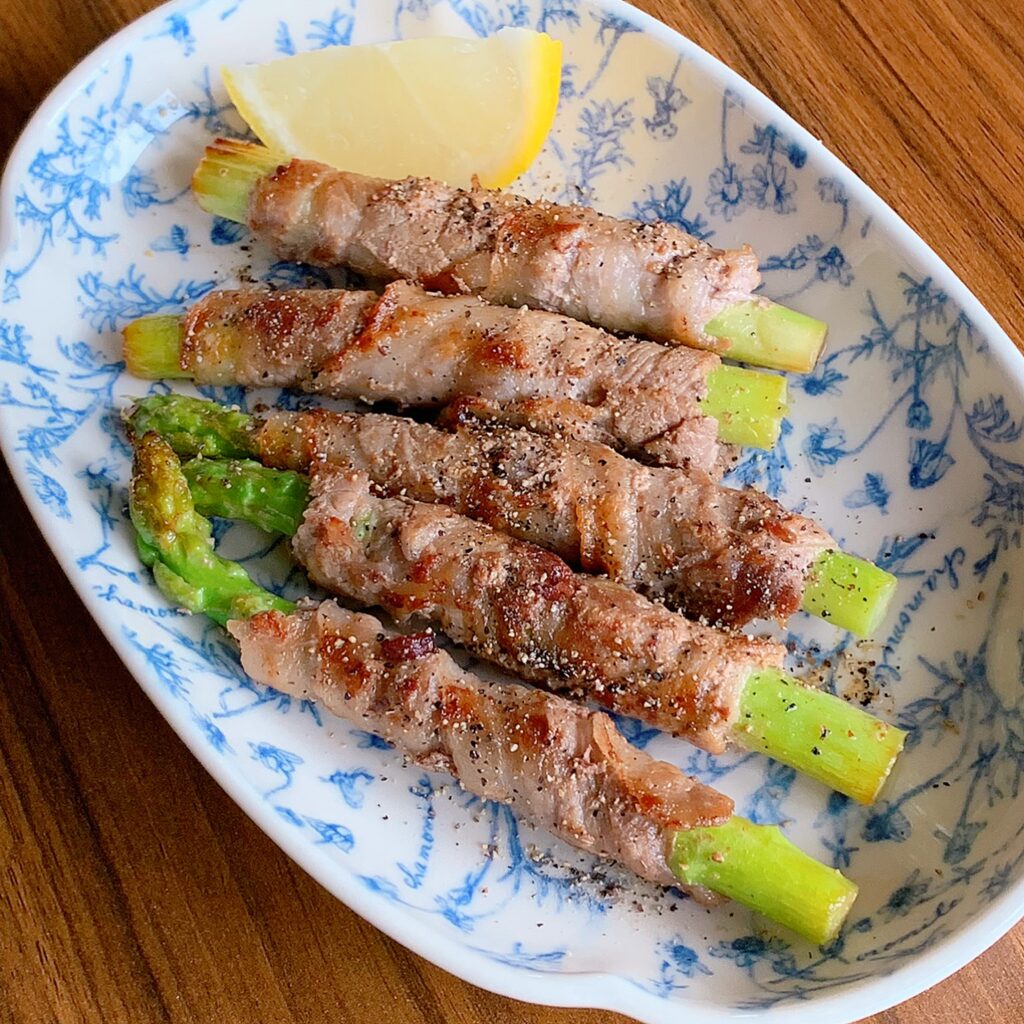
Asparagus Nikumaki (Wrapped in pork belly) アスパラ肉巻き
What kind of dish is Asparagus Nikumaki (Wrapped in pork belly)⁇
This dish is made by wrapping thinly sliced pork belly around asparagus and grilling it in the oven.
It only takes 5 minutes to prepare, and then you can grill it in the oven for 20 minutes and it’s ready.
This easy dish can be enjoyed for a variety of occasions, whether it’s for lunch, dinner or as a snack with drinks.
Because it’s grilled in the oven, the excess fat from the pork belly is removed, so it’s not heavy.
However, the rich flavor of the pork belly permeates the asparagus, so even with just salt and pepper as seasoning, it’s very flavorful.
This is a menu I make every year when I see asparagus in season at the supermarket.
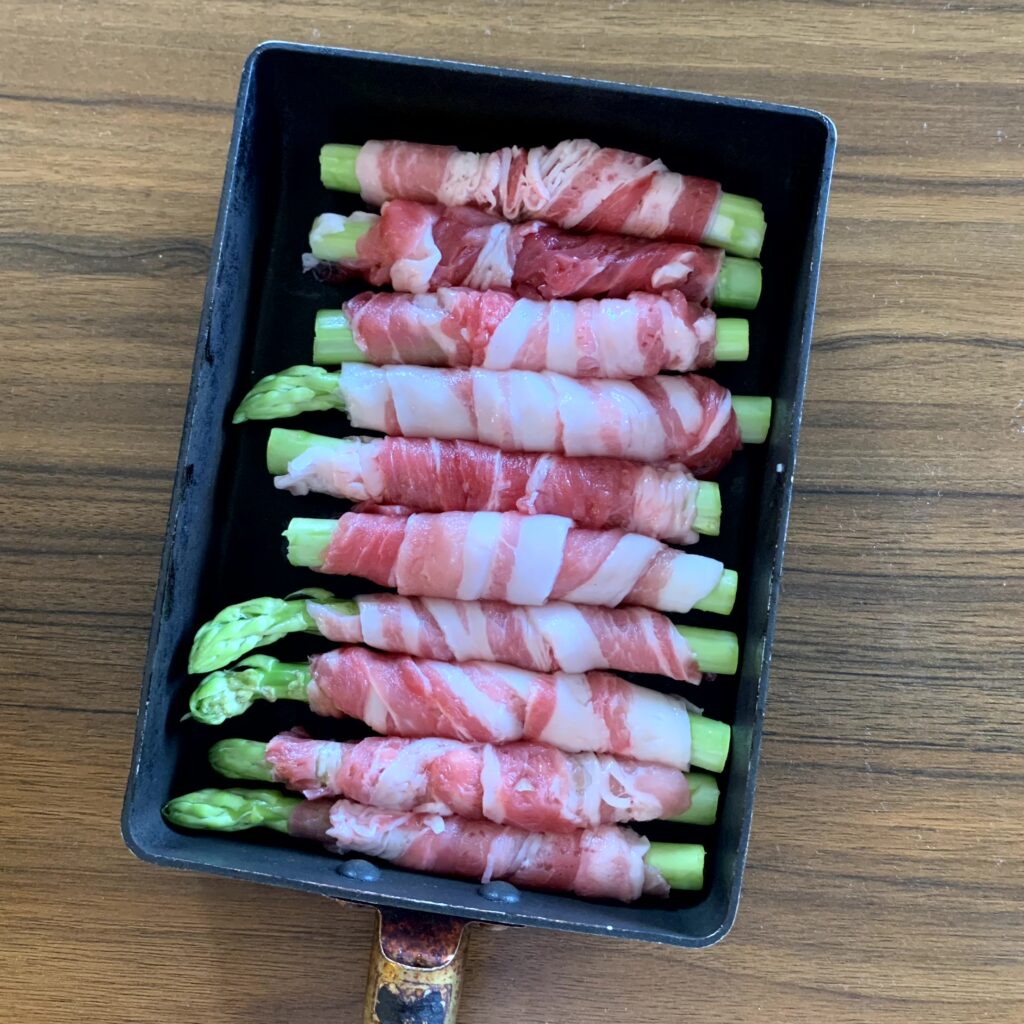
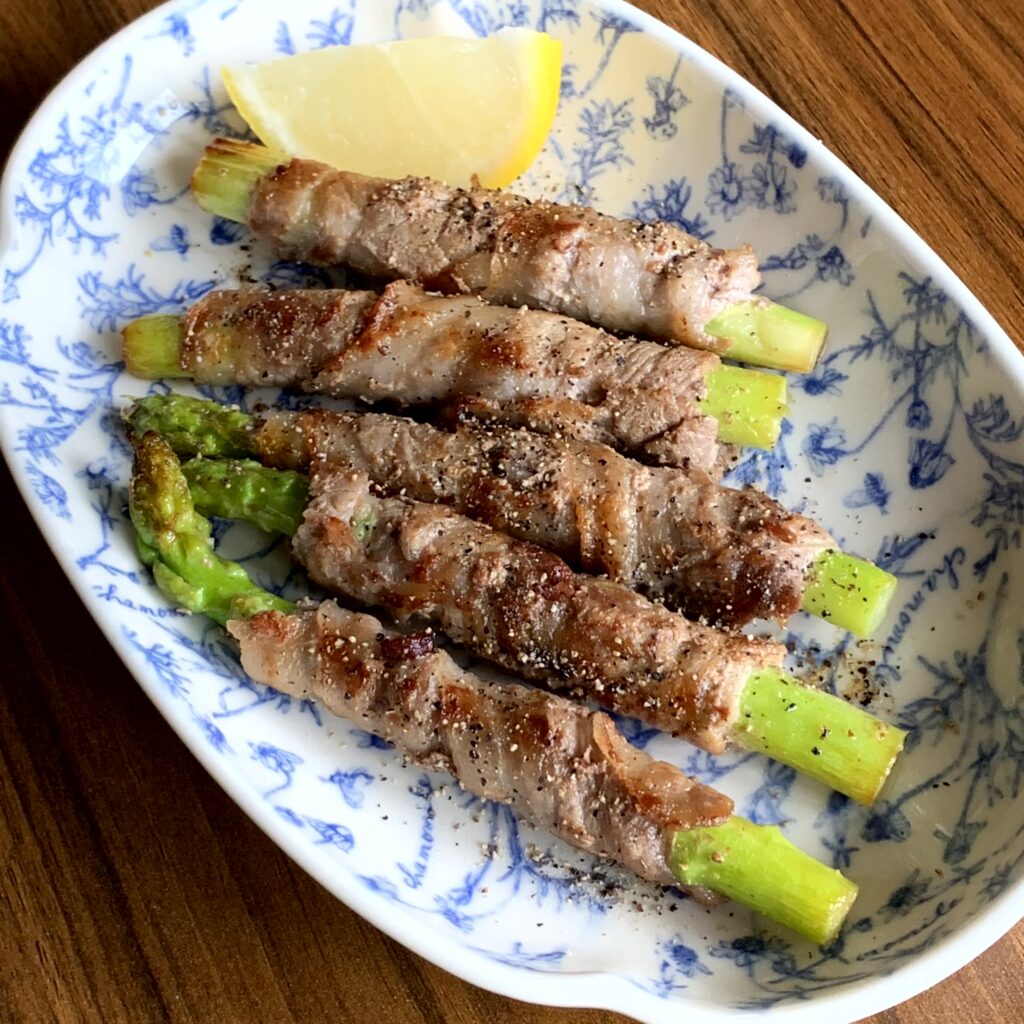

NUTRITION FACT : Asparagus Nikumaki (Wrapped in pork belly)

- 869 Calories
- Protein 32.4g
- Total Fat 83.2 g
- Total Carbohydrates 8.3 g
- Sodium 2.2 g
INGREDIENTS : Asparagus Nikumaki (Wrapped in pork belly)
- Asparagus 9 pieces
- Thinly sliced pork belly 23g×9 sheets
- Salt 2g
- Pepper moderate amount
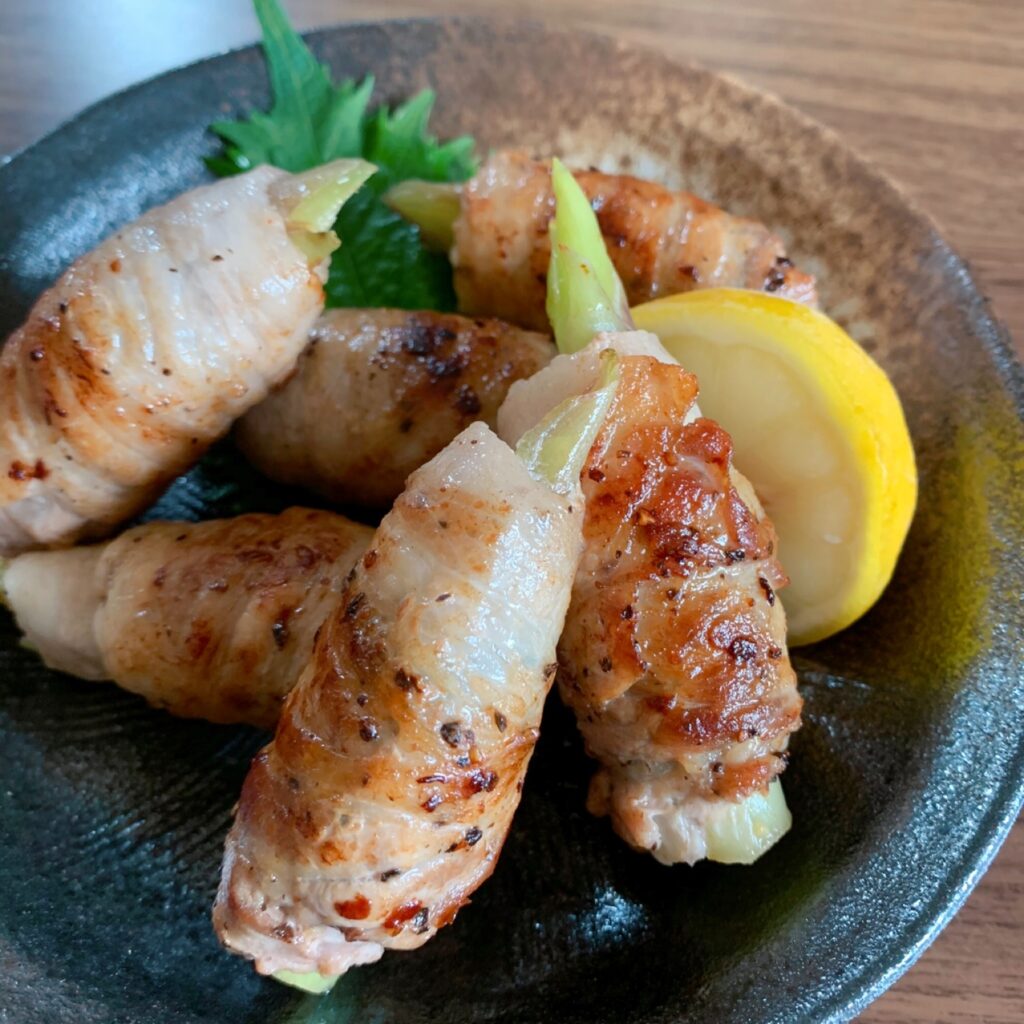
Asparagus Nikumaki (Wrapped in pork belly)kumaki (Wrapped in pork belly)
- Remove the strings from the asparagus with a peeler. Asparagus is very fibrous, so it tastes even better if you prepare it properly before cooking.
- Cut off the tough parts at the bottom of the asparagus.
- Wrap it in pork belly. Gently pull the pork belly so that it sticks to the asparagus.
- Arrange the asparagus on a baking tray and sprinkle with salt and pepper.
- Place the baking tray on the middle rack of a preheated oven at 230°C and grill for 20 minutes.
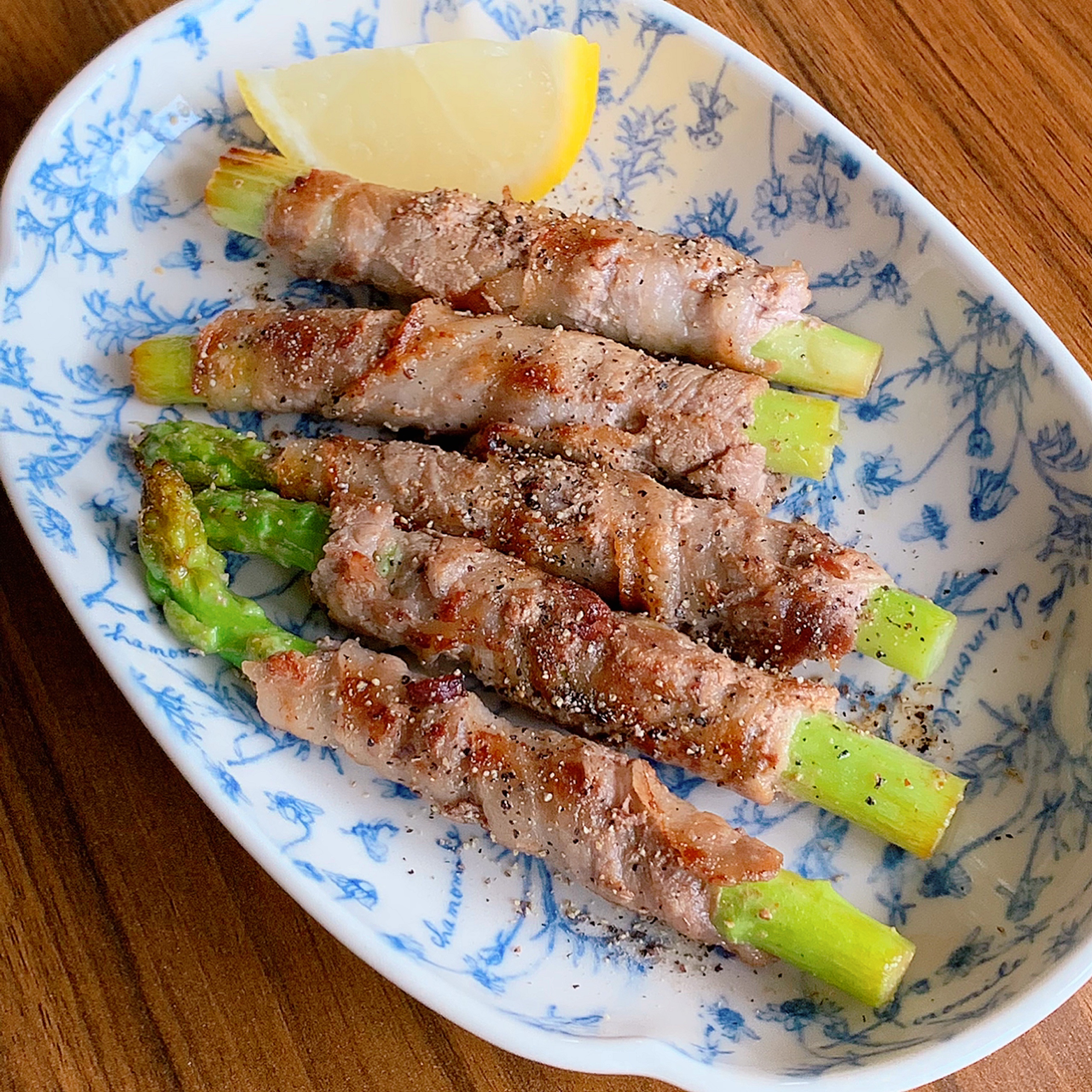


コメント